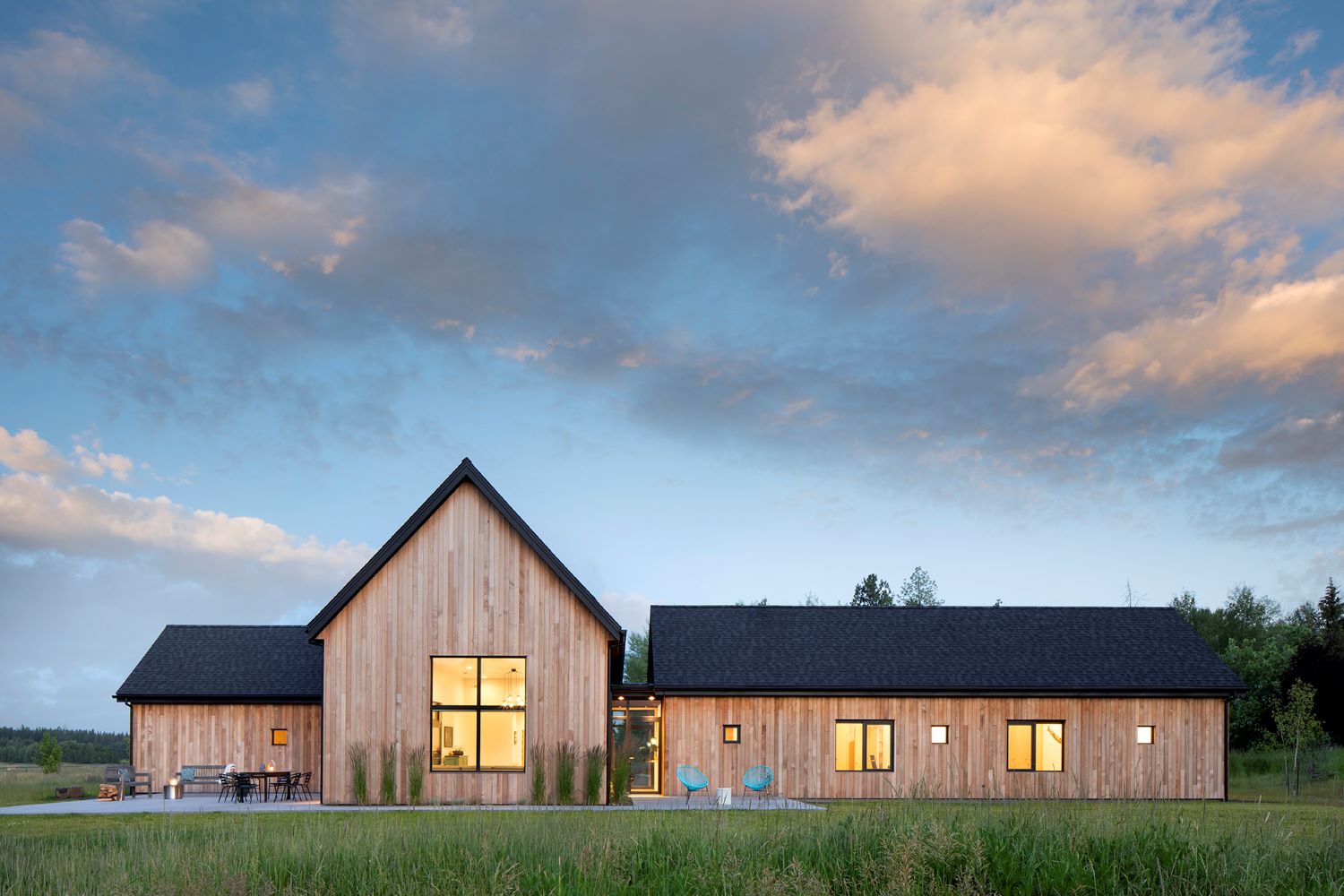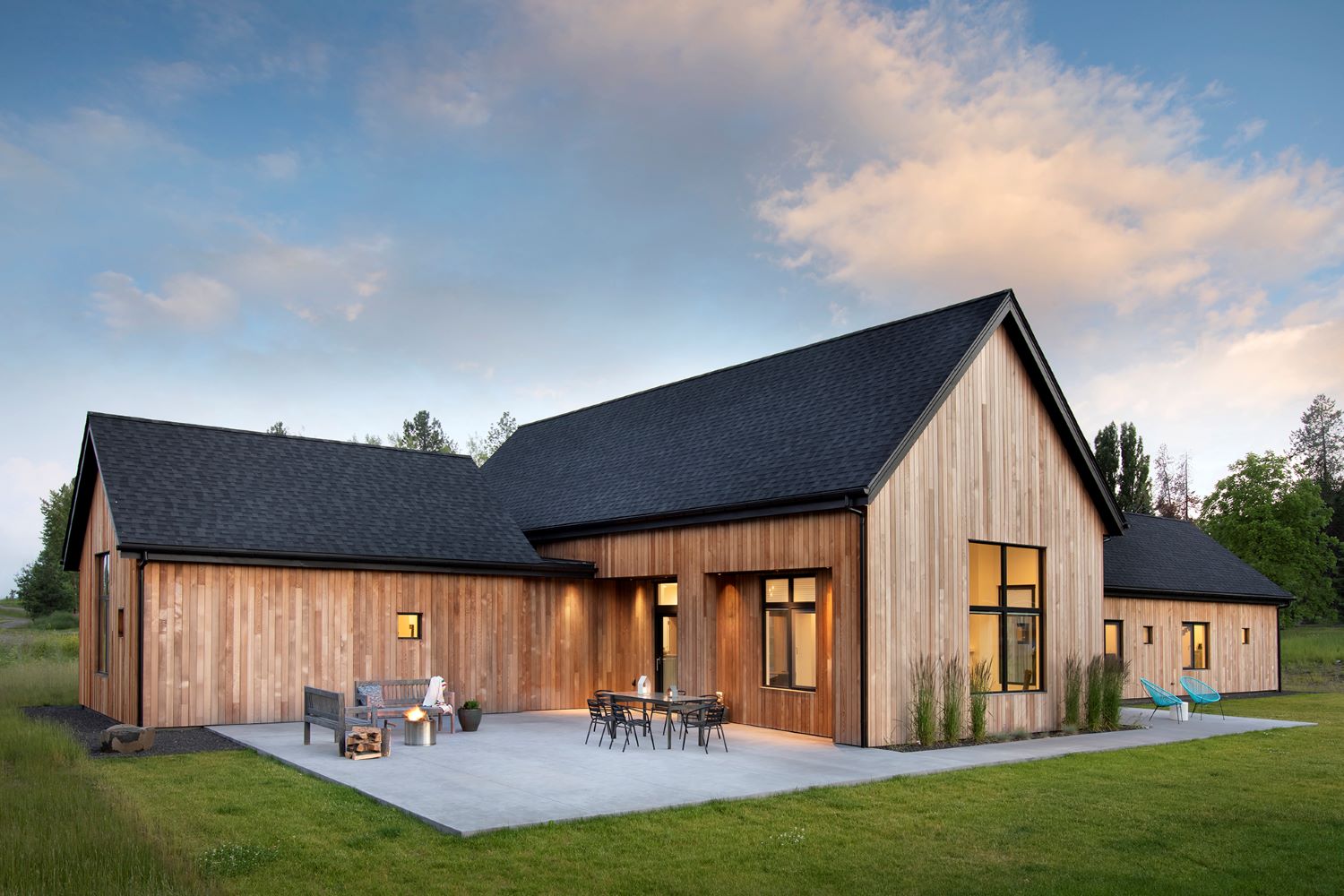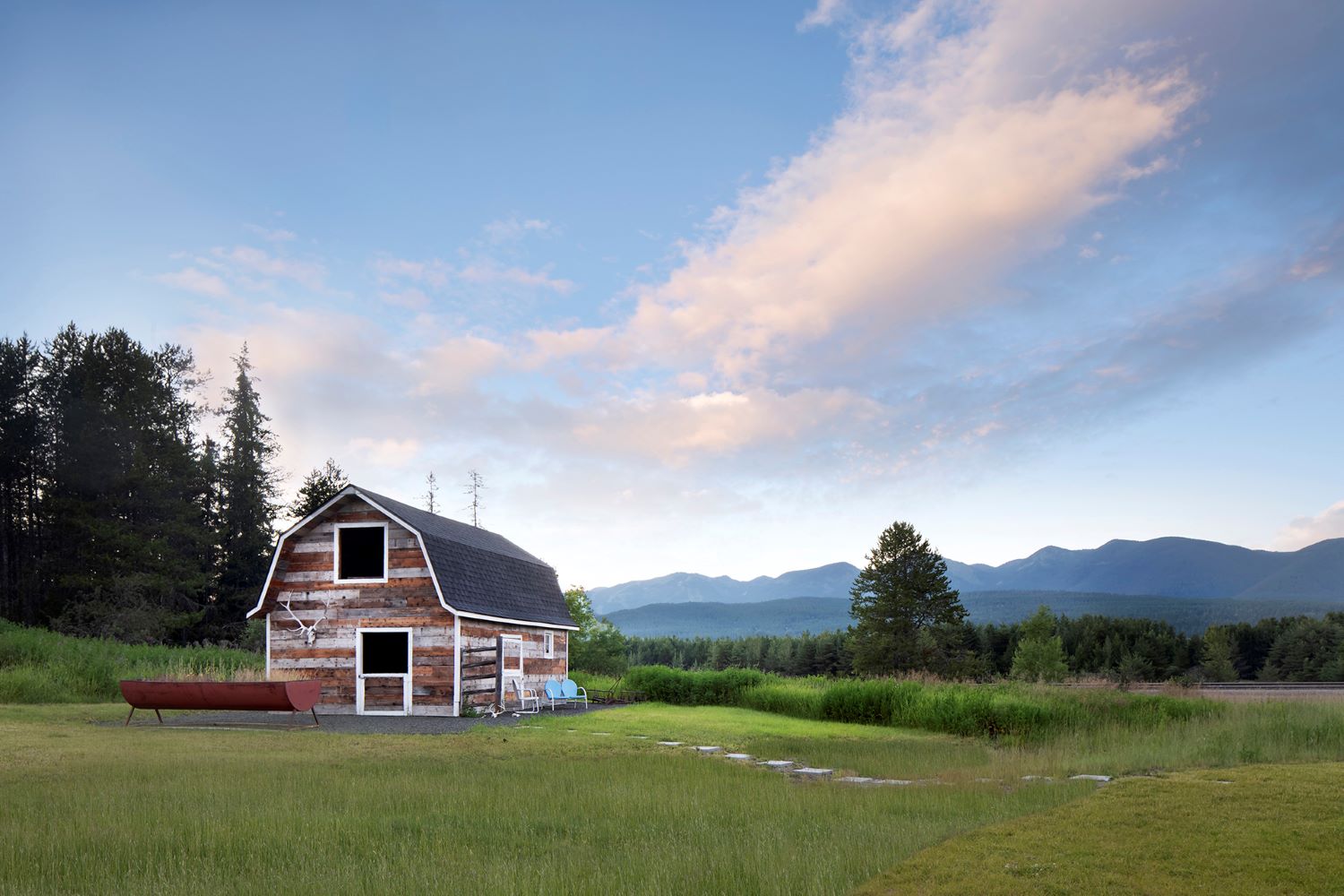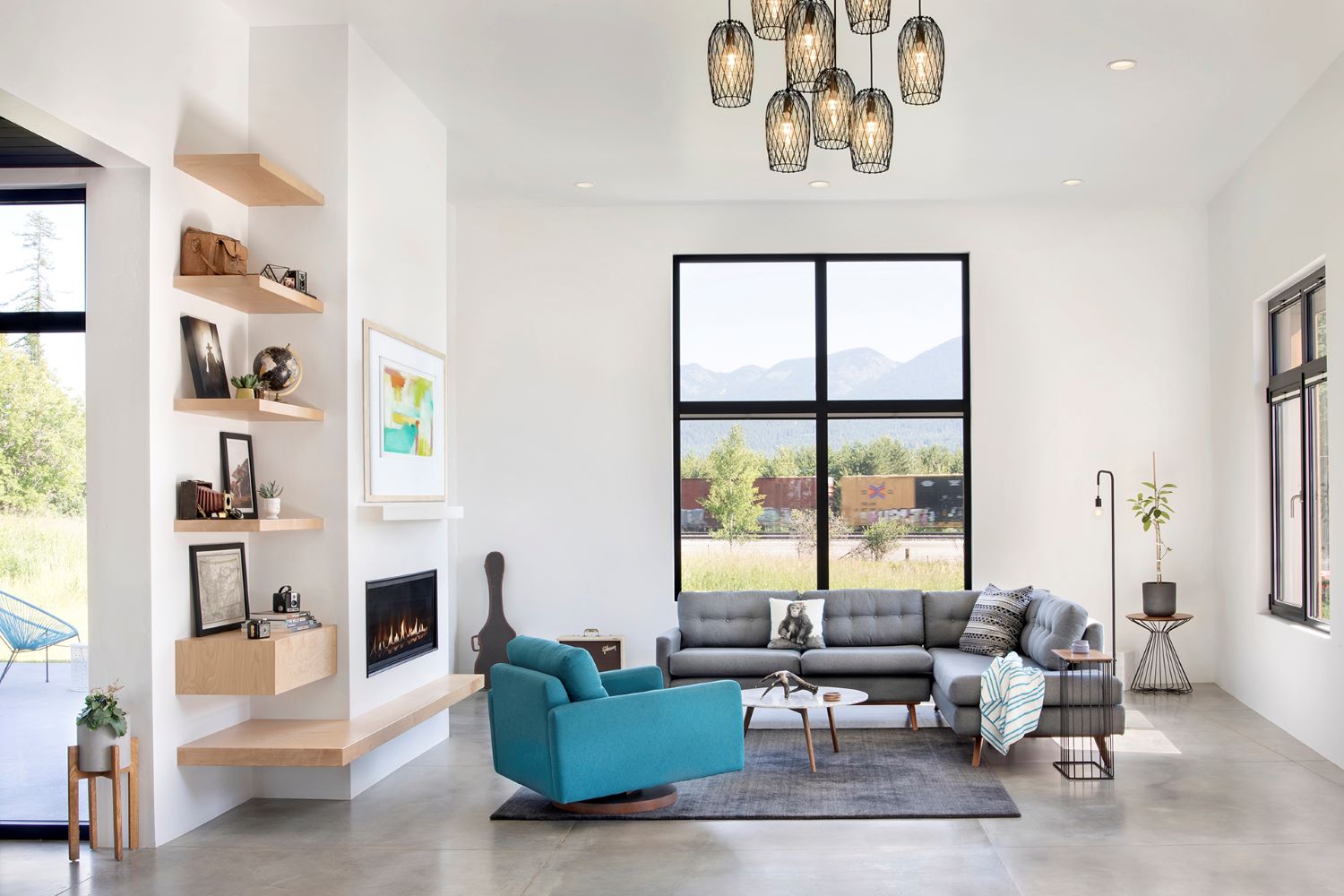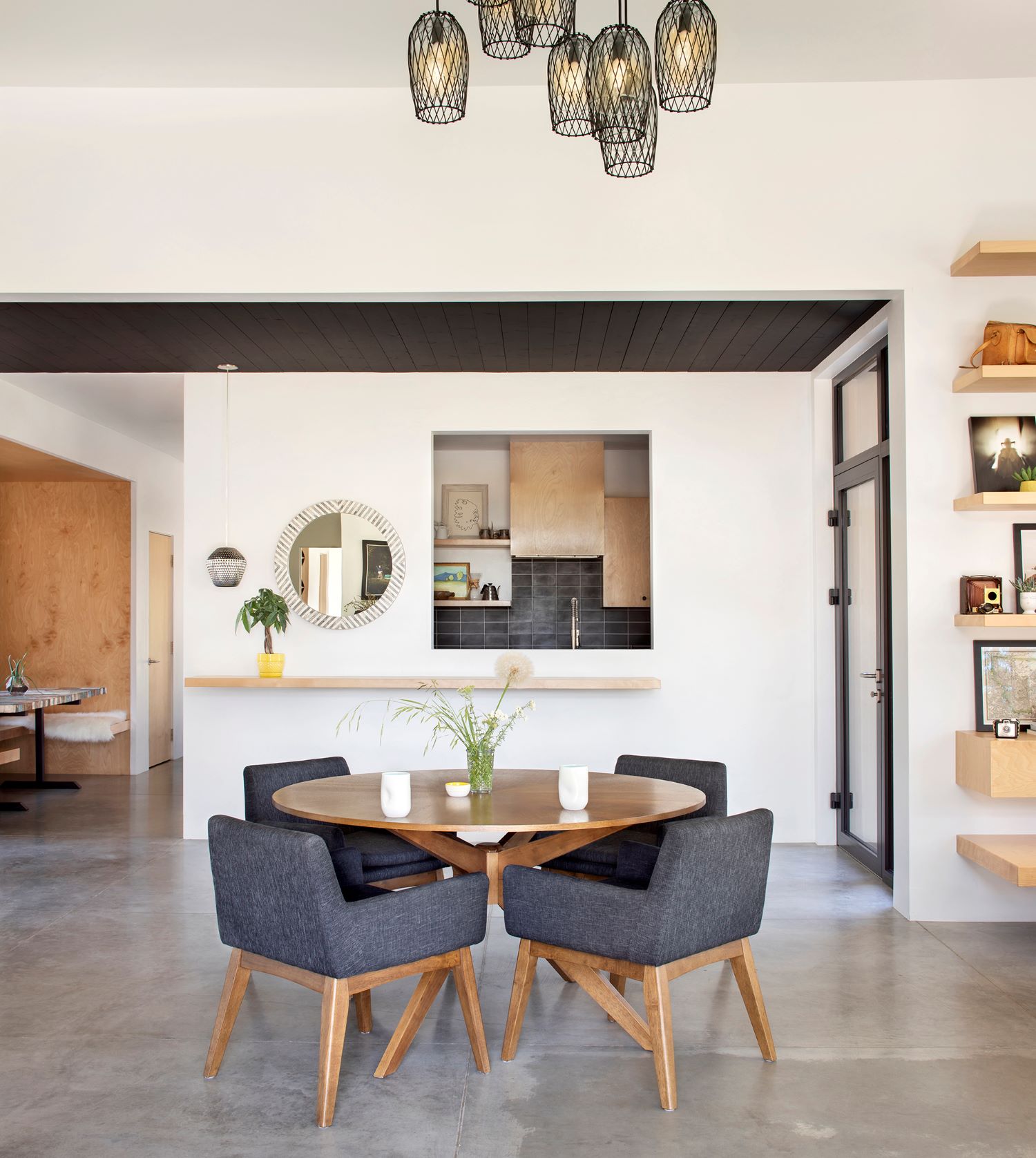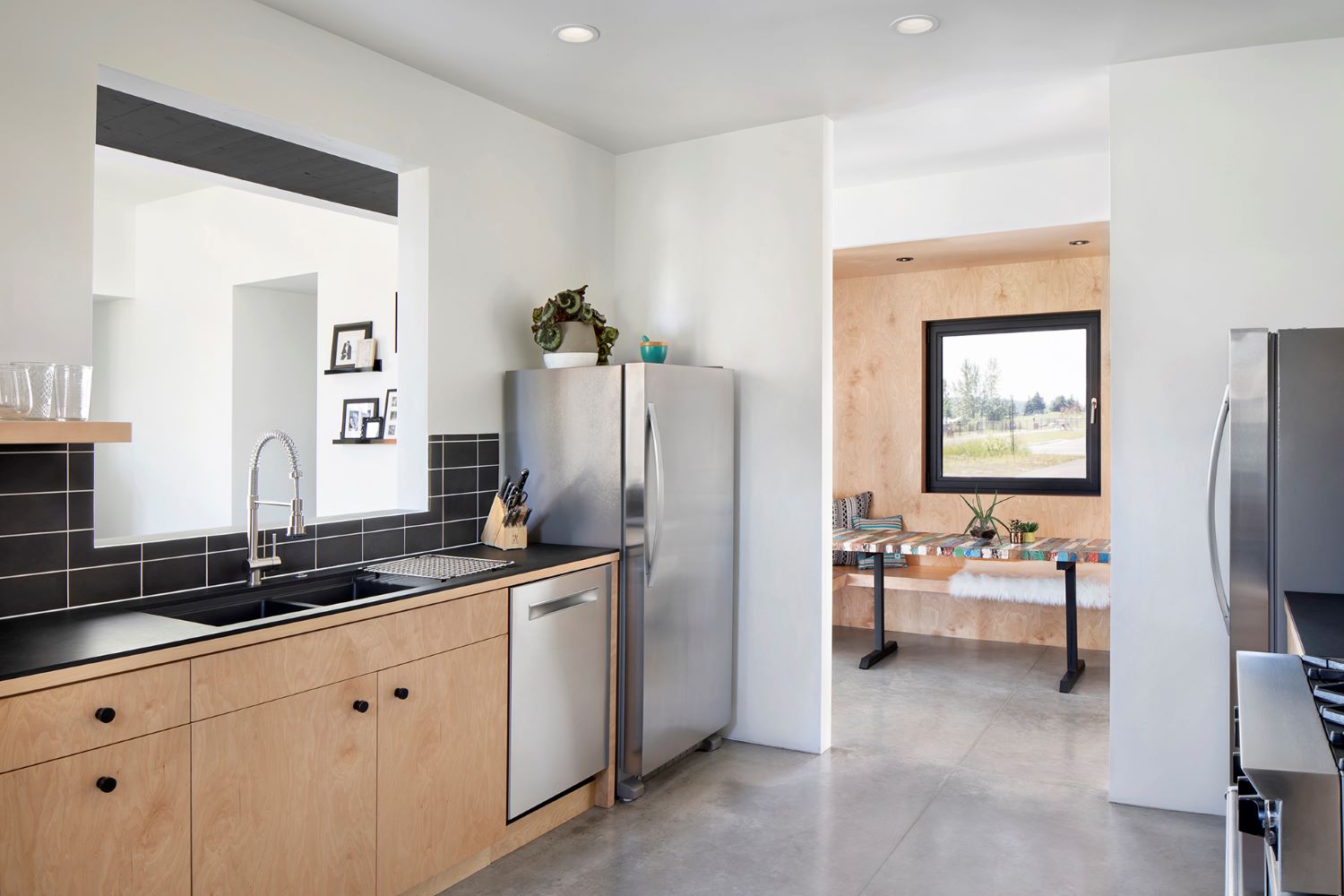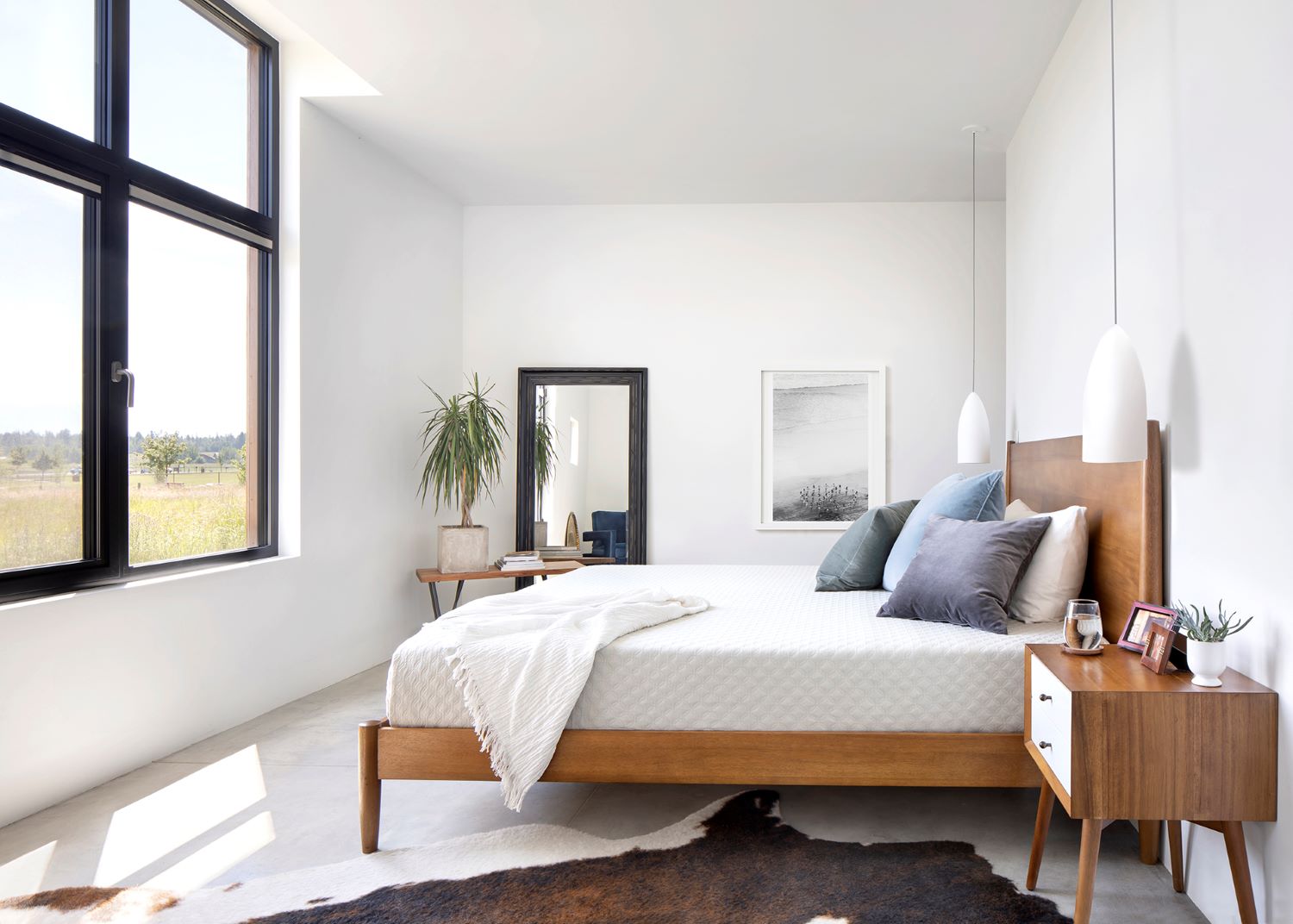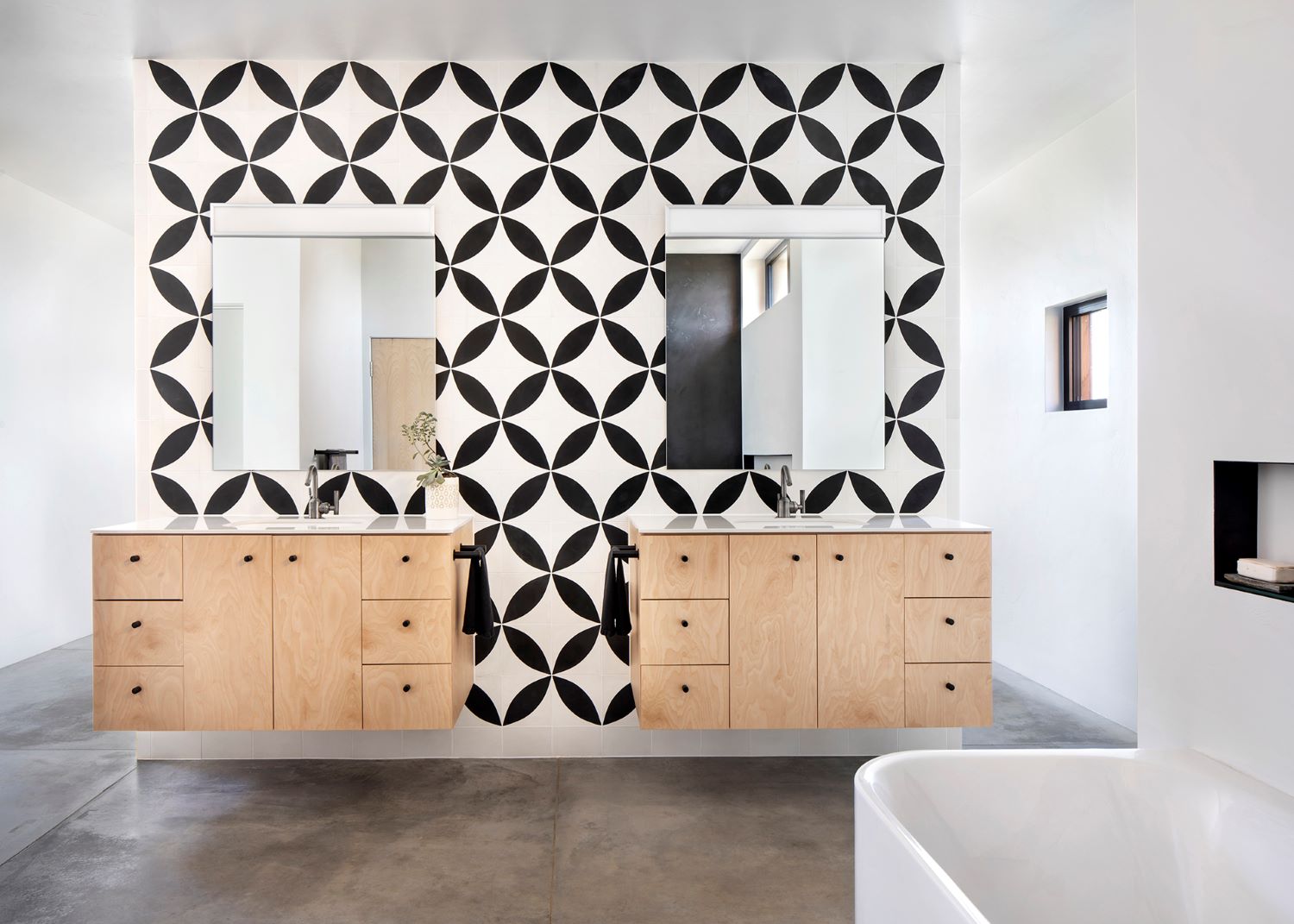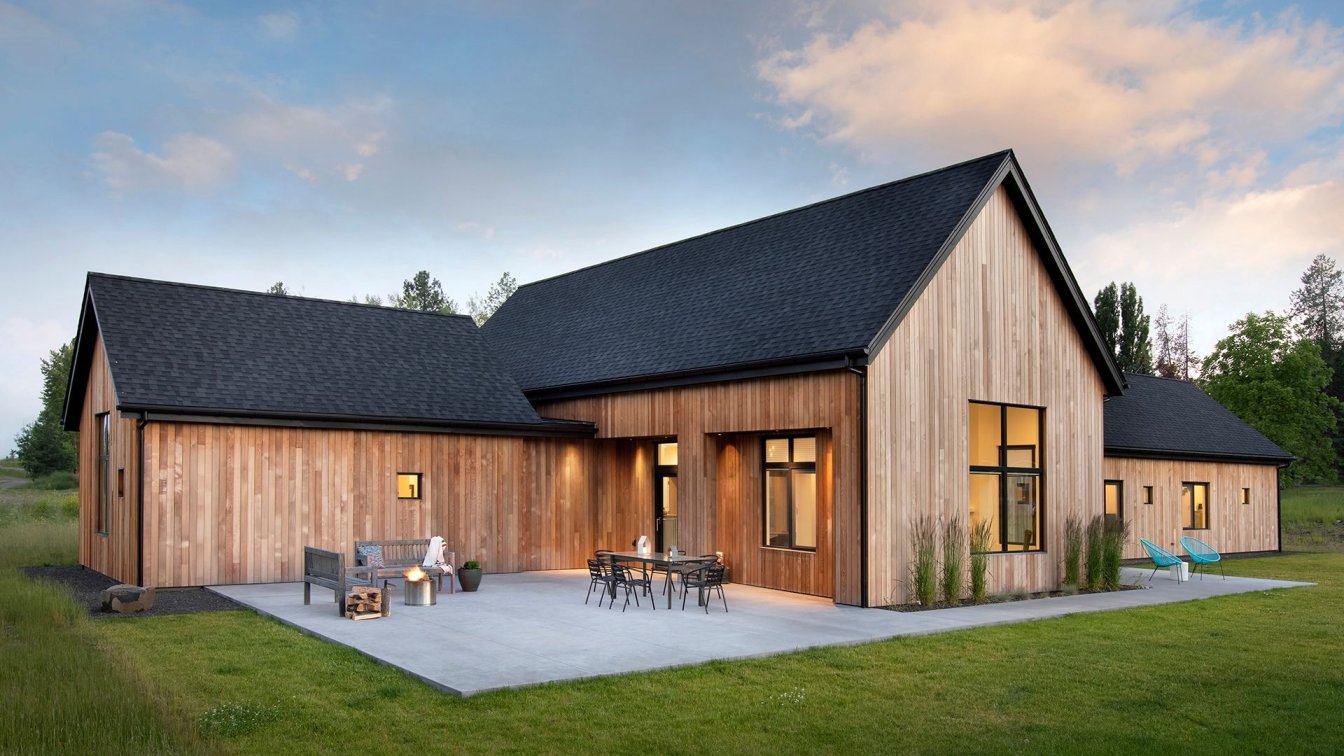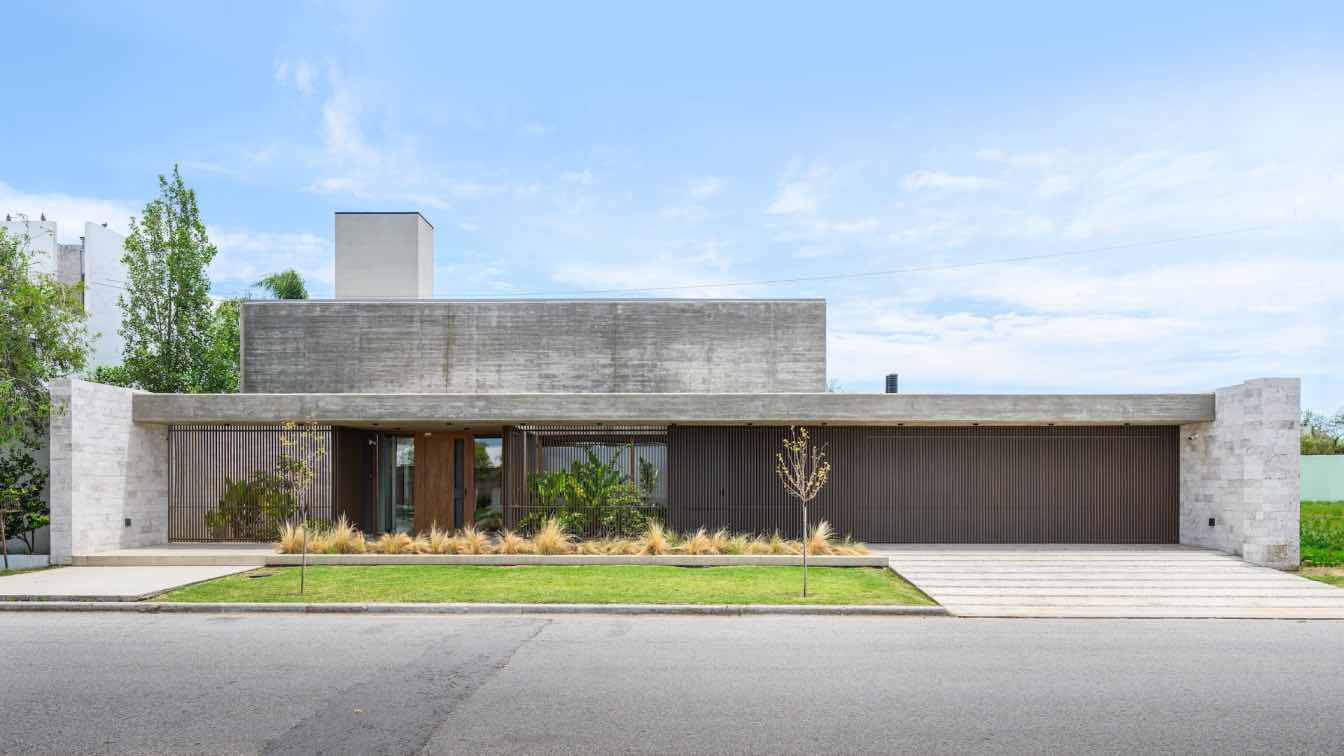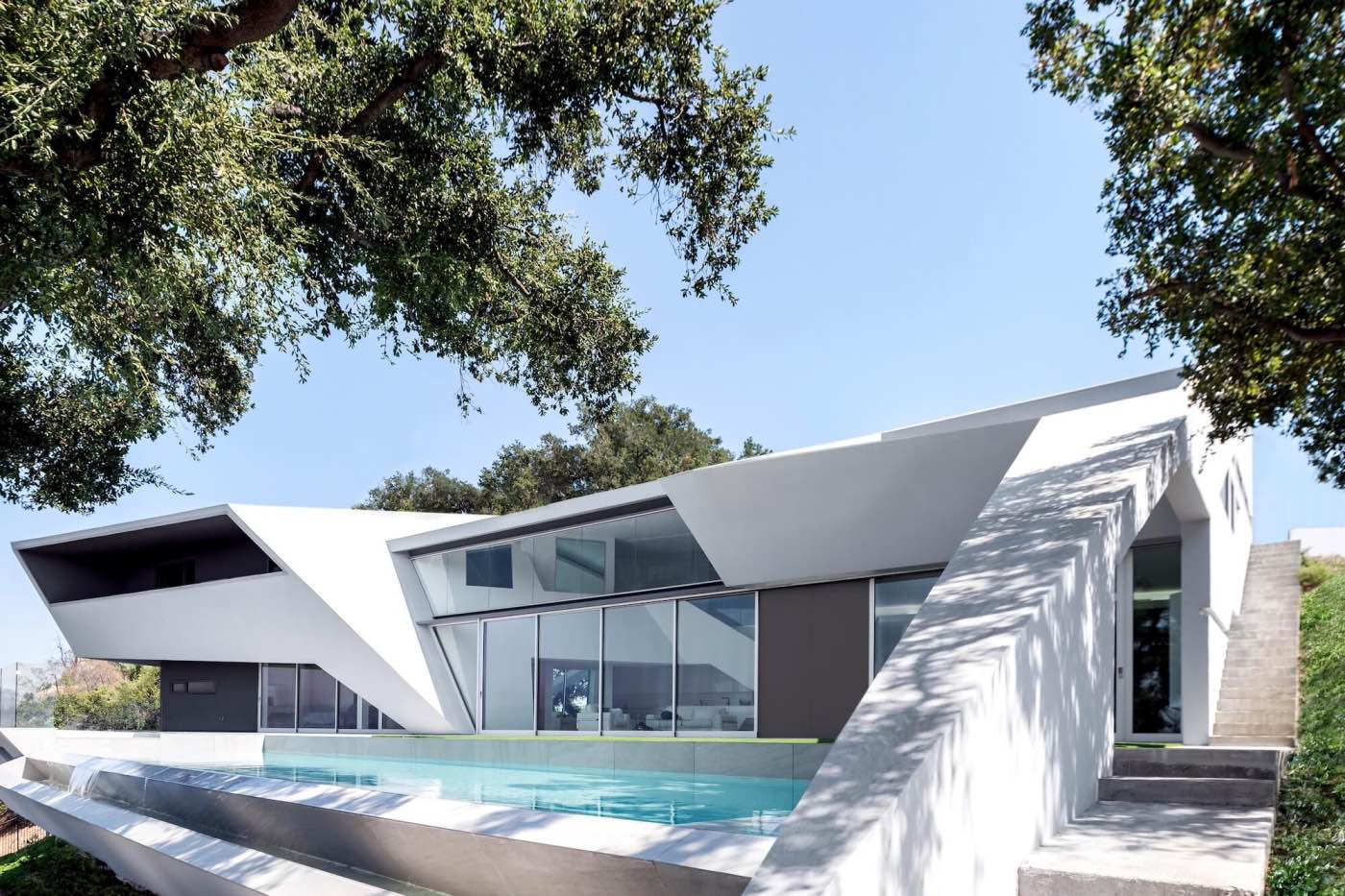Cushing Terrell: Nestled on 4.5 acres in the eastern outskirts of Whitefish, Montana, the Railway residence is located at the nexus of three defining features: the Whitefish Range to the north; Great Northern Mountain, bookended by the Swan Range and Saddleback Mountain to the east; and connecting the two, the Great Northern Railroad. The design of this 3,500-square-foot home captures and frames these landmarks through simple, gabled forms that loosely recall the agrarian vernacular architecture throughout the region. Together with contemporary detailing, the house captures the familiarity of the past while providing the functionality and performance of today.
Basic spaces—living area, home office, music studio, garage and storage—are divided into four primary volumes arranged around a central autocourt. The spatial organization enables the family of four to have distinct public and private zones. Short, low-slung, glazed walkways connect the cedar-clad gabled forms and emphasize movement from one zone to another. Windows are pulled up to the underside of roof eaves, bringing a modern sensibility to traditional building forms. A barn, original to the site, has been restored and provides storage and a backdrop for the homeowner's photography business.

The interiors adopt a European-inspired aesthetic made evident through simple, clean lines and a limited yet warm material palette. White walls and concrete floors—made comfortable through energy efficient, radiant, in-floor heating that’s paired with a heat recovery ventilator—unify the interior aesthetic. Large windows showcase the dramatic mountain vistas. “We went into the project with sustainability and comfort as a priority,” says the homeowner. “I love our windows and our living room…it’s so open and light. We get to watch the sunset on the mountains and see the deer. It feels like we’re outdoors even though we’re in our home.” To accentuate the views in the living/dining room, one of the walls angles toward a view of Great Northern Mountain. “It’s a modest design move,” notes Charlie Deese, project architect for CTA | Cushing Terrell, “subtly guiding your eye in that direction. It also creates a pocket of space for exterior patio doors to have a little bit of cover.” One of the walls in the music room is also angled, though in this case for acoustical performance rather than to enhance views. The interiors are pulled together by highlighting similar colors and textures throughout the space. A casual breakfast nook immediately off the entry and kitchen is at the building’s southern side, where exterior views are limited. Ample built-in storage keeps clutter to a minimum.

Foundation walls employ insulated concrete forms while exterior cedar-clad walls feature a rain-screen assembly with continuous insulation and blown-in cellulose cavity insulation—a 50% improvement over code minimums and equivalent in cost to the typical spray-in foam/batt insulation combination. Easy-to-build, pre-fabricated wood trusses meant sealing, insulating, and naturally ventilating the concealed attic spaces were easy to accomplish. High performance doors and triple-pane windows round out the performance initiatives.
From the placement on the lot to the simple cedar siding to the accents of texture and color throughout, all these elements together create a sustainably responsible house that celebrates family life and the surrounding landscape.
